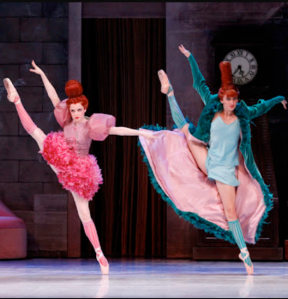The Australian Ballet presents new original work from current Choreographers that explore dance within our contemporary setting. The three acts are Faster,Squander and Glory and Infra.
There are no tutu’s , all are stripped down, very physical performances with strong male leads and a sense of urgency.
” I love the story telling and its ability for anyone to create their own interpretation and take away a unique experience.” Kevin Ho
INFRA
The richness and pain of life takes place behind closed doors in our most intimate spaces. The drama of being unfolds, between the gaps of daily life. The ‘must do’s’ have no time for the intimate condition. The ‘must do’, is the daily travel to the daily toil. The other stuff is the real us.
English Choreographer Wayne Mc Gregor of the The Royal Ballet, explores the intimate in contrast to the business of life. As rich and deep as our lives are or are not, we dwell within a larger context . Those that fall out of the ‘infra’-structure, fall alone.
The ballet explores social and political content in dance, yet it is deeply sensual. There is a tribal call away from the world into the instinct. The male soloist that stands in for that call, is memorable in its power.
SQUANDER AND GLORY
Both Australia and Melbourne can be glad to boast of a choreographer as creative and insightful as Tim Harbour. Like INFRA, Harbour seems to be exploring the complexity of intimacy and power. Kevin Ho’s structure appears like a sculpture but looms as much more. The dancers sway to the cult of obedience as though the monument dominates them.
“The negative spaces that surround me…an instinct to carve out those shapes” Harbour
Visually every aspect of the work is sculptural, even the music seems to be in the act of carving. Every muscle of the dancers bodies cuts into a cubist texture, using light and shadow to enhance the effect.
FASTER
Faster opens the triple bill, created in 2012, the year of the London Olympic Games, choreographer David Bintley recreates the drama.The Games are the ultimate statement of giving up everything to be first. To place it last rewinds us to how we got there. Faster, Greater and Better? How much personal ambition does it take to be a winner.
The dancers within Bintley’s work interchange into human and non-human parts. They may be a spinning disc or an abstraction of an ego. It explores the outer and inner world of the athlete, the frustration and self-abasement to the harmony of the work coming together within a united self.
This Triple Bill offers contemporary Ballet lovers, a physical. emotional and creative journey. They are raw and sensual Ballet’s that allow the dancers to explore new physical boundaries of space and movement.
Arts Centre Melbourne,


























